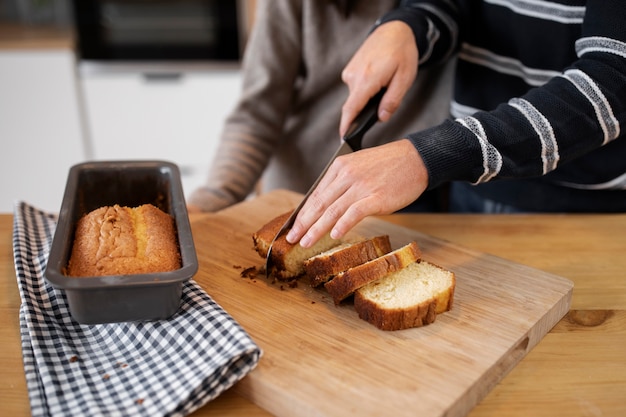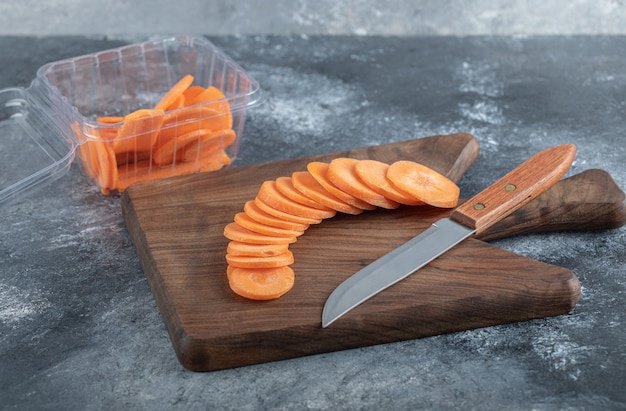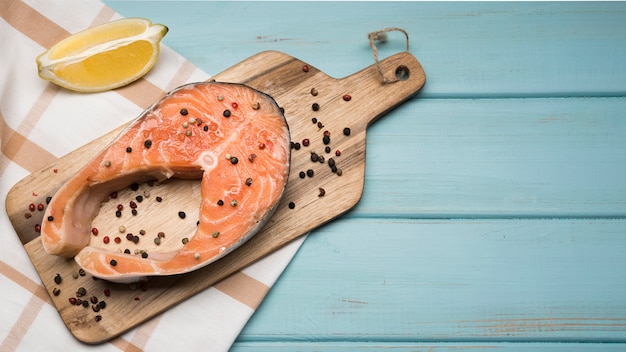Ah, cedar plank salmon. Just the thought of that smoky, rich aroma fills me with a sense of anticipation. It's not just about the delicious flavour, though. There's something incredibly satisfying about the whole process, from prepping the plank to carefully watching that salmon turn a beautiful golden brown. I've been grilling salmon for years now, and I've learned a thing or two along the way. So, settle in with a cuppa, and let's delve into the world of cedar plank salmon.
(Part 1) Choosing the Perfect Pair: Plank & Salmon

The first step, of course, is choosing the right plank and salmon. It's like pairing wine and cheese – you want to get the flavours complementing each other beautifully.
The Plank: A Foundation for Flavor
There are a few things to consider when choosing your plank, mate. You want a sturdy foundation for your delicious salmon:
Thickness: A Matter of Heat Retention
A thicker plank will hold heat better and prevent burning, especially if you're using a gas grill. But, it will also take longer to soak, so it's a bit of a trade-off. I usually opt for a plank that's about 1/2 inch thick – it strikes a good balance.
Wood: The Flavour Profile
Cedar is the classic choice for salmon, and for good reason. It imparts that signature smoky, slightly sweet aroma that we all love. But, don't be afraid to experiment! Other woods like alder, hickory, or maple can add unique flavour dimensions. Alder is a bit milder than cedar, hickory adds a more robust smoke, and maple can bring a touch of sweetness.
Size: A Comfortable Fit
Get a plank that's big enough to fit your salmon comfortably. You want to leave some space around the edges, so the salmon cooks evenly and doesn't touch the hot grill directly.
The Salmon: The Star of the Show
Now, onto the salmon. The heart of this whole affair, mate. You want a good, thick piece, ideally skin-on. The skin acts as a barrier, helping to retain moisture and keep the fish intact during cooking.
choosing the right cut
A good fishmonger is your best friend in this situation. Ask them for recommendations, and don't be afraid to ask about the quality and freshness of their salmon. Look for a firm, shiny fillet with bright pink flesh and a mild, clean smell.
Size Matters
For a plank-grilled salmon, you want a piece that's at least an inch thick. This ensures a nice, juicy interior and a good surface area for that smoky goodness.
(Part 2) Preparing the Plank: Soaking for Success

Alright, now it's time to get that plank ready for action. Soaking is the key to a successful cedar plank salmon, mate. Think of it as a good long soak in a hot bath – it softens the wood, prevents burning, and helps infuse the plank with flavour.
The Soak: More Than Just Water
- Fill a large container with cold water and submerge your plank. It needs at least 2 hours, but overnight is even better.
- Now, here's where you can get creative. Add some flavour to the water with lemon juice, herbs, or even a bit of wine. I love adding a splash of white wine and a few sprigs of rosemary – it gives the plank a beautiful subtle fragrance.
Drying the Plank: Ready for the Grill
Once your plank has had a good soak, pat it dry with kitchen paper. You want it damp, but not dripping. This will ensure that the salmon cooks evenly and doesn't become overly waterlogged.
(Part 3) Preparing the Salmon: A Symphony of Flavours

Now, let's get that salmon ready for its star turn. This is where your creativity shines through, mate. I'm a fan of a simple salt and pepper mix, but the possibilities are endless.
Seasoning: A Base for Flavor
Herbs: Think dill, thyme, rosemary, tarragon. They all bring their own unique character to the party.
Spices: Smoked paprika, cumin, garlic powder, a sprinkle of cayenne pepper – these add warmth and depth.
Citrus: A little lemon, lime, or orange zest can really brighten up the flavours.
My go-to: A Simple Blend
I usually go for a simple blend of fresh dill, chopped garlic, and a pinch of smoked paprika. But hey, don't be afraid to experiment!
Marinating: Adding Another Layer
Marinating isn't essential, but it's a great way to really amp up the flavour. You can do a quick marinade or a longer one, depending on your schedule.
- Combine your favourite herbs, spices, and citrus zest with some olive oil and a pinch of salt and pepper. You can also add a bit of soy sauce for extra depth.
- Brush the marinade all over the salmon, wrap it in cling film, and let it sit in the fridge for 30 minutes to an hour. This allows the flavours to penetrate the flesh and really enhance the experience.
(Part 4) Grilling Time: The Smoke Show Begins
Alright, mate, here's where the fun really begins. It's showtime!
Setting Up Your Grill: The Perfect Heat
Gas Grill: Heat your grill to medium-high heat, around 400°F/200°C. You want a good, even heat for consistent cooking.
charcoal grill: Use good quality charcoal and let it burn until it has a good layer of ash. This indicates that the coals are ready for cooking.
Preheating the Plank: A Crucial Step
Don't rush it: Place the plank directly on the grill and let it heat up for a few minutes until it's hot. You'll know it's ready when the surface is slightly charred and the wood starts to release its aroma. This usually takes about 5-7 minutes.
Watch for signs: The wood will start to smoulder, and you might even see wisps of smoke. This is a good sign that the plank is ready to receive your salmon.
Placing the Salmon: Gentle and Careful
Gently, gently: Carefully lift the salmon onto the plank, making sure it's resting in the centre. You don't want it to slide off!
Spacing matters: If you're cooking multiple planks, make sure to leave enough space between them on the grill. You want to ensure that the heat circulates evenly and the salmon cooks properly.
(Part 5) The Big Cook: Patience and Observation
Now, let the magic happen!
cooking time: A Balancing Act
Thickness matters: The cooking time will vary depending on the thickness of your salmon and your desired level of doneness. For a 1-inch thick piece, it'll usually take around 15-20 minutes.
Temperature check: Aim for an internal temperature of 145°F (63°C) for medium-well done salmon. You can check this with a meat thermometer, but I find that a quick poke with a fork usually does the trick. If it flakes easily, it's ready.
Signs of Doneness: Visual Clues
The colour: As the salmon cooks, the flesh will turn a beautiful opaque white, and the skin will become crispy.
The flaking: When you gently press the salmon with a fork, it should flake easily. This means it's cooked through and ready to enjoy.
Watch for Flare-ups
If your grill is really hot, the fat from the salmon can cause flare-ups. Keep an eye on the flames and be prepared to move the planks if necessary.
(Part 6) Taking it Off the Grill: Rest & Relaxation
Alright, the salmon is cooked! Now, it's time to give it a little break.
Resting the Salmon: A Crucial Step
Let it cool: Remove the salmon from the grill and let it rest on the plank for a few minutes. This allows the juices to redistribute, resulting in a moister, more tender fish.
Transferring: Gentle Handling
Careful transfer: Carefully transfer the salmon to a serving platter, or you can even serve it directly on the plank. I like to leave the plank on the platter for a bit, as it adds a touch of rustic charm.
(Part 7) Serving Up Your Masterpiece: A Feast for the Senses
Finally, the moment of truth! This is where all your hard work comes together.
Presentation: A Showstopper
Simple elegance: Serve the salmon with a side of roasted vegetables, a green salad, or a simple rice dish. It's a dish that doesn't need much fuss – let the smoky flavour be the star.
A splash of colour: A sprinkle of chopped fresh herbs, a squeeze of lemon, or a drizzle of olive oil can really enhance the visual appeal.
The Taste: A Sensory Delight
The first bite is everything. That smoky, cedar-kissed flavour paired with the tender, juicy salmon, oh, it's a delight! It's a flavour combination that's sure to impress, whether you're hosting a dinner party or simply enjoying a meal with loved ones.
(Part 8) Tips and Tricks: From the Grilling Pro
Now, here are a few things I've learned along the way that might come in handy:
Don't over-season: While you can be adventurous with seasoning, less is often more, especially when it comes to cedar plank salmon. The cedar wood itself adds a strong flavour, so you don't want to overwhelm the fish.
Keep an eye on the heat: The grill's temperature can fluctuate, so keep an eye on the salmon and adjust the heat accordingly. You don't want it to burn.
The beauty of leftovers: Cedar plank salmon is delicious reheated! Simply reheat it in a low oven or on a skillet, and enjoy it for lunch or dinner the next day.
(Part 9) FAQs: The Answers You Seek
1. Can I use a cedar plank more than once?
Yes, you can! After using a plank, wash it thoroughly with soap and water and let it air dry completely. It's best to avoid putting it in the dishwasher. Just remember, each time you use it, it'll lose some of its flavour and eventually need to be replaced.
2. What if my plank gets too charred?
If your plank starts to get too charred, it can impart a bitter flavour to your salmon. You can try scraping off the charred parts, but it's usually a good idea to use a fresh plank if you're concerned.
3. What happens if I don't soak the plank?
Soaking is crucial! If you don't, the plank is likely to burn and give your salmon a bitter taste. It's not worth the risk, mate. Just soak it.
4. Can I use a cedar plank in the oven?
Not recommended. Cedar planks are designed for grilling or smoking, not baking.
5. What do I do with the plank after cooking?
You can either dispose of it, or if you're feeling ambitious, you can try turning it into a coaster or a cutting board! Just make sure it's completely dry before you do anything with it.
(Part 10) Final Thoughts: A culinary adventure
There you have it, mate! The ultimate guide to cedar plank salmon. It's a bit of a journey, but trust me, the results are well worth it. So gather your ingredients, fire up the grill, and get ready to enjoy the smoky, delicious flavour of cedar plank salmon. Happy grilling!
Everyone is watching

How to Cook Frozen Lobster Tails Perfectly: A Step-by-Step Guide
RecipesLobster. Just the word conjures up images of lavish meals, special occasions, and a taste of luxury. But let's...

Pigs in a Blanket Cooking Time: How Long to Bake for Perfect Results
RecipesAh, pigs in a blanket. Just the name conjures up images of those delightful little parcels of crispy pastry en...

Pork Fillet Cooking Time: How Long to Cook It Perfectly
RecipesPork fillet, or tenderloin as it's sometimes called, is a real favourite in our house. It's so versatile, and...

The Ultimate Guide to Cooking Delicious Frankfurters
RecipesLet's face it, we all love a good frankfurter. It's a classic, simple, and always satisfying. But let's be rea...

Wolf Meat Recipes: A Guide to Cooking Wild Game
RecipesLet's be honest, you don't see wolf meat at your local butcher shop every day. It's a bit of a wild card, but ...
